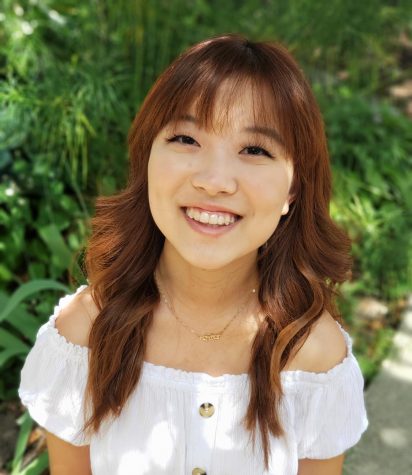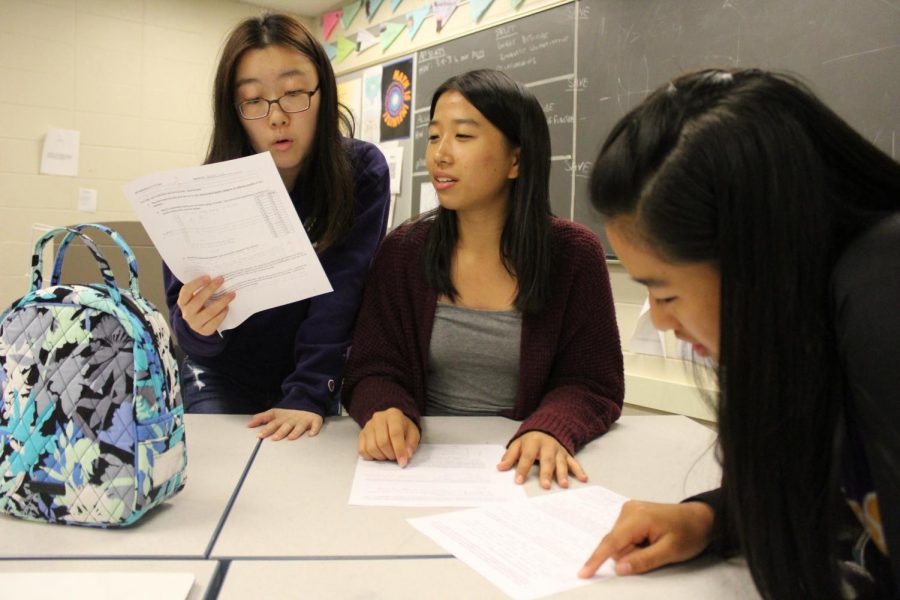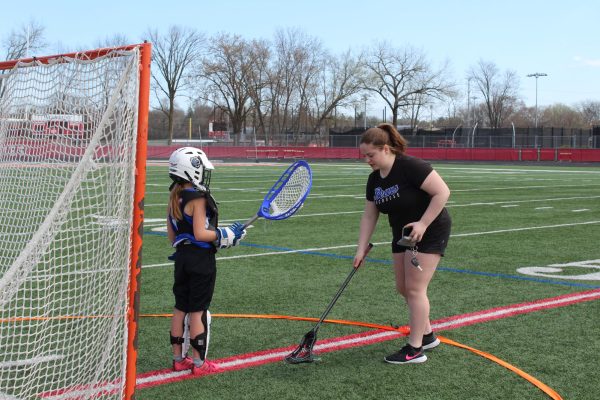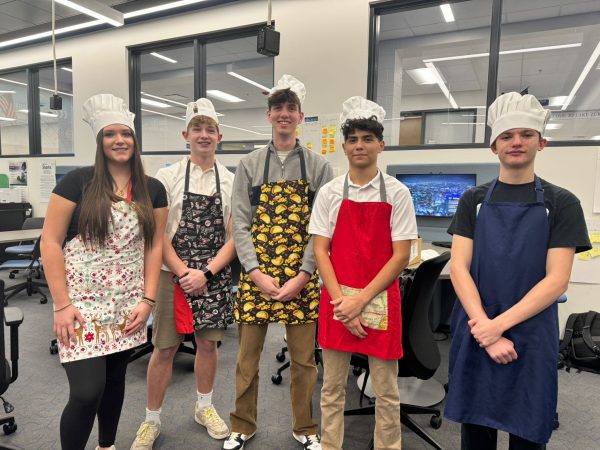Breaking boundaries
Underclassmen break the norm by taking AP classes typically taken by upperclassmen
Photo by Photo by Annette Suk
Sophomores Rachael Lee and Elizabeth Yen discuss their quiz corrections with Elizabeth’s sister, Tiffany Yen. 5 underclassmen take AP Stats this year, breaking the norm, as it is a class typically taken by upperclassmen.
Seeing a few freshmen or sophomores entering the classroom in AP classes with more seniors and juniors present is not a likely sight. But for these underclassmen, they are qualified and chose to attempt the challenge of the workload and pace.
AP Statistics typically is a class with more juniors and seniors, but sophomores attempt the AP class, as it is open to any student that passed Algebra 2 from last year. Elizabeth Yen , sophomore , is part of the few underclassmen that take the class. But Yen feels more prepared, because her older sister, Tiffany Yen , senior , is in her class. With that connection, they can learn together and help each other out with any comprehension problems.
“It’s really fun having Tiff in my class and I don’t really think about how she’s a senior and I’m a sophomore. It’s really more like she’s always been around to help for my other classes so it’s kind of like having a tutor take the class with me,” Yen said. “We do work separately on assignments, but we do help each other and work together when one of us is confused.”
As Tiffany has more knowledge due to the age, Yen receives a lot of help from her sister because as Tiffany understand the concepts faster.
“I’m usually the confused one and she knows the material, and how we learned it in class. So, it benefits me a to have her know what’s going on and help me. She definitely is the one who knows more and gets the concepts faster,” Elizabeth said.
For some who have more experience with AP classes , AP Stats may not be as formidable for other sophomores. Rony Ochakovski , sophomore , takes 6 AP classes this year and does not view AP Stats as a difficult class, but rather as extra practice.
“[AP Stats] has a rigid schedule. There’s been a lot of harder classes where the concepts are a lot more difficult to understand. [In AP Stats], it’s really straightforward and [Mr. Hanson] explains it. You go over it twice, once over the homework and in class, so it’s really easy and repetitive,” Ochakovski said.
Yet, this forces him face the struggles of hours devoted towards homework. Ochakovski’s goal is an Ivy League college and to achieve that goal, he manages to fit in 6 AP classes during his sophomore year.
“All the classes I want to take seem interesting and if I stretched it out over the four years, I simply wouldn’t be able to fit it all” Ochakovski said. “You get at least 2 ½ to 3 hours of homework each night and it’s constant. It’s never, ‘Oh, I get an hour here and another hour there.’ It’s always 2 ½ hours of homework.”
In attempt to get college credit, the difficult AP classes may seem approachable at first, but the workload of the classes is often ignored according to Rhea Prakash , freshman . Prakash notices the faster pace in AP World History over other classes. AP World History is encouraged to be taken by 10-12th graders, but freshmen are allowed to take the class and expose themselves to an university- level curriculum, Steve Jeretina , History Department Head , says.
“I feel that there is a difference of the pace between Honors and AP, because [it] seems to go much faster, and you have to make sure that you are prepared on every thing, since you will never know when a quiz or test will come up,” Prakash said. “The most difficult part of AP right now would have to be the homework, because you need to take into account that there are many events that occured in history that can impact what you write down.”
The tough AP classes have intense workloads, fast pacing, and much time must be devoted for the class. However, these underclassmen attempting upperclassmen AP classes have come prepared. With the obstacles in their way, they all continue to persevere and reach their goals.

As a senior, Annette is in her fourth and final year of journalism. It is also her first year as a Business Manager. Annette is a very excited FAME leader...










